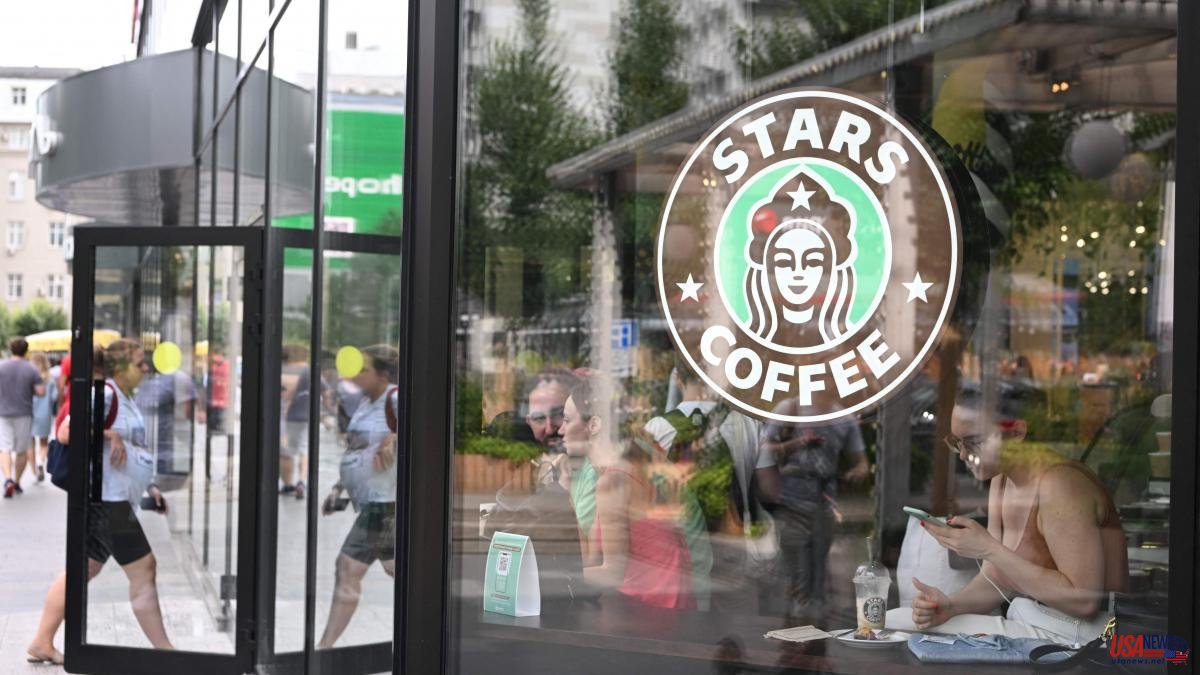Western countries have slapped Russia with unprecedented sanctions packages this year to punish the Kremlin for putting its boots on Ukraine. The eleventh-largest economy in the world faltered at first, but they failed to knock it down as some had hoped, much less force it so that Russian President Vladimir Putin renounced his goals in the neighboring country.
In 2022 Russia will suffer a sharp drop in GDP (6%, according to the International Monetary Fund), but not as dramatic as it had previously predicted (8.5%; others saw 15%).
“The Russian economy suffered a lot. The short-term blow has been comparable to that of 2008-2009, ”Antón Tabaj, chief economist at the risk rating agency Expert RA in Moscow, explains to Dinero. “But it did not suffer as expected by those who applied the sanctions and many national economists. The picture is very calm: there is no banking crisis or a sharp increase in unemployment.
The reasons are various. In a globalized world, Russia has in recent years cultivated relations with countries that are unwilling to implement Western policies.
Vladimir Klimanov, head of the Center for Regional Policy at the Academy of Economics and Public Administration (Ranepa), explains via email that “the Russian economy has a high degree of stability, resistance to large-scale external influences. Russia is a major exporter of raw materials and important goods for the world economy (natural gas and oil first; metals, mineral fertilizers, grain). The sharp increase in the prices of energy and other types of raw materials, which are the main products of Russian exports, has contributed to the preservation of income, even with a reduction in volume.
Inside, the "adequate measures of the Central Bank of Russia to control the capital markets, without directly controlling the currency exchange and prices, or the possibility of having budgetary resources, have helped," Tabaj points out.
As a consequence, the ruble, which fell as much as 30% in February, has been recovering and, with oil rising, was the best performing world currency in June. Inflation has also been brought under control. And the exit of more than 1,200 foreign companies has been well-dressed as Russian businessmen have bought some significant brands, such as the fast-food chain McDonald's.
But it is oil and gas, with more than a fifth of the weight of GDP in the first half of the year (21.7%, according to Rosstat), who are pulling the wagon.
In these months Russia has made huge profits thanks to the increase in the price of oil and natural gas. The latter's exports did suffer, with a 60% drop in supplies to Europe, but oil exports have been very solid after Moscow managed to switch its customers from Europe to those from China and India, although it has had to make discounts of around 30%.
In January, when it still seemed unthinkable that Russia would enter Ukraine, 54.5% of Russian oil exports went to Europe, which constituted 80% of oil and gas revenues. In June, the picture of oil and gas pipelines changed. With Western sanctions in place and the announcement of an embargo on Russian oil in stages, Russian oil exports to Europe fell by a third, according to the International Energy Agency (IEA).
Russia remains the world's leading exporter of oil and oil products. In July, it exported 7.4 million barrels a day of both, according to the IEA. That meant a drop of 600,000 barrels, when forecasts pointed to a drop of 3 million.
More than in Beijing, a traditional ally, Moscow has found a good client for its oil in New Delhi: 43% of its Asian market, according to Bloomberg. In January, Russian oil exports to India were symbolic (barely 30,000 barrels per day). In June they reached 740,000. Those from China even fell: from 820,000 in January to 740,000 in June.
The balance made by the accountants of the Russian Government is positive. The current account surplus of its balance of payments has been in the first seven months of the year the highest in history (166,000 million dollars), according to data from the Central Bank of Russia on August 9.
But without hydrocarbon exports, the scenario would be totally different.
In fact, if conditions are bad gas and oil could be a problem. Its exports have been the basis of Russian foreign trade for more than a decade. “In good years it is a locomotive, but with bad prices (2014 is the clearest example) it is a brake. This year, with the favorable conditions and the combination of the market situation, the measures to reduce the effects of the sanctions, the oil and gas sector is pulling the GDP”, says Tabaj.
According to the Ministry of Finance, in July 2022 the income of the State coffers, discounting gas and oil, plummeted 29%, which constitutes a record in the last 11 years. Experts attribute the decline to problems in the metal industry and a general slowdown in business activity due to sanctions.
But there are already signs of stabilization. The industrial sector contracted in July by 0.5%, according to Rosstat, the Russian Statistical Agency. It was the smallest drop in the last four months, which, according to Bloomberg, indicates that the Russian economy is adapting. Contributing to this was the increase in mining and oil production, the rebound in sectors such as pharmaceuticals, semiconductors or textiles, which in some way benefited from the departure of foreign competitors.
The automobile industry, knocked out in the first months by the departure of foreign companies that dominated the components sector (production fell by 61.8% until June), also seems to be taking a breather. AvtoVAZ, producer of the Lada, has announced the return to its usual production in September after maintaining activity only four days a week.
The economy, and Russian society in general, are not experiencing deadly turmoil from Western measures. But that may change when the imported resources run out, so the coming months are expected to be particularly hard, where companies will have to maintain their profitability. “The metallurgy was hit, it was seriously affected by the external restrictive measures. In addition, in several companies there is restructuring of their infrastructure, sometimes related to the change of owners due to the departure of foreigners,” Mstislav Afanásiev, a professor at the Higher School of Economics, told the RBK newspaper.
In addition, no one guarantees that the high prices of hydrocarbons and the demand from India and China will continue to act as a locomotive. By the end of 2022, European countries will have reduced oil purchases from Russia by 90%. Tabaj warns that "now, in the context of the slowdown in the world economy, the element of high prices is weakening." That is why Russia is in a race against time to reform the foundations of its economy and make it productive before the sanctions really hurt it.
In the coming months, Russia will have to substitute imports of components for its industry that it has stopped receiving. But this replacement, internally or seeking links with new markets, is quite difficult to achieve in the short term. Moscow has to hurry.
Even so, experts point out that it is very difficult to isolate the Russian economy. “Russia has a population of 146 million people, it has a giant internal market. Even with maximum isolation from the world economy, the Russian economy will function," Klimanov assures. Tabaj, for his part, admits that in the event of a prolonged sanctions regime, growth will be reduced and imports will become more expensive. And he provides an example: “Slow growth is not a disaster. But, on the other hand, the difference of one percentage point of annual growth in long horizons is the difference in the level of economic development between Argentina and Australia: at the beginning of the 20th century they were at the same level, but then Australia grew faster in a average of 1% per year. The results are obvious."













